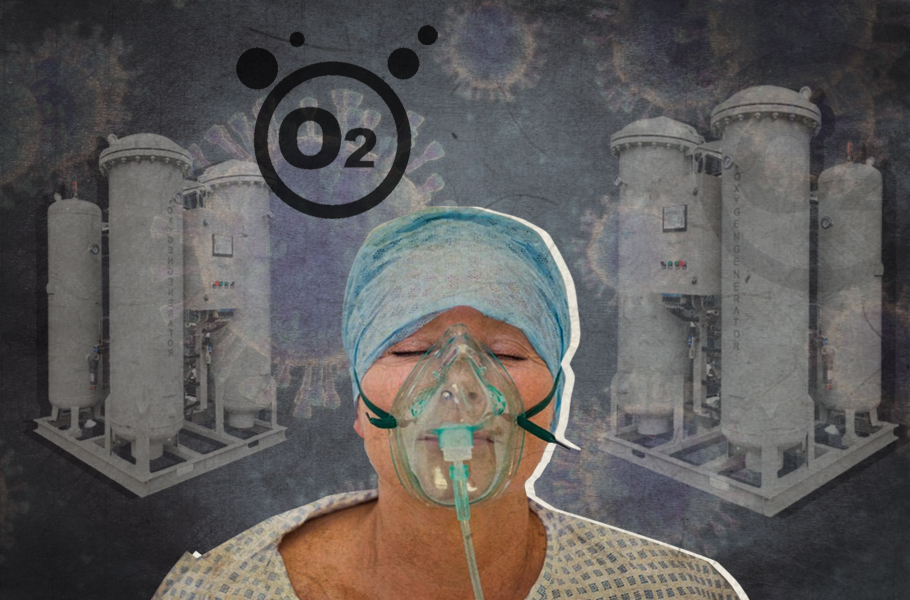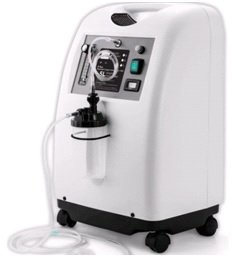
Oxygen concentrators during COVID-19: What we need to know
As India battles the 2nd wave of the COVID-19 pandemic, the surge of new infections has resulted in an alarming increase in the number of active cases. The resultant stress on our public health infrastructure has led to a big spike in demand for oxygen concentrators.

As India battles the 2nd wave of the COVID-19 pandemic, the surge of new infections has resulted in an alarming increase in the number of active cases. The resultant stress on our public health infrastructure has led to a big spike in demand for oxygen concentrators.
To survive, we need a steady supply of oxygen, flowing from our lungs to various cells in the body. COVID-19 is a respiratory disease which affects our lungs and can cause the oxygen level to drop to dangerous levels. In such a situation, we would need to undergo what is known as oxygen therapy – using oxygen for medical treatment, to enhance our oxygen levels to clinically acceptable levels.
Oxygen level is measured by oxygen saturation, known briefly as SpO2. This is a measure of the amount of oxygen-carrying haemoglobin in the blood. A healthy individual with normal lungs, will have an arterial oxygen saturation of 95% – 100%.
According to a WHO training manual on pulse oximetry, if the oxygen saturation is 94% or lower, the patient needs to be treated quickly. A saturation of less than 90% is a clinical emergency.
Now, according to the latest clinical guidance for management of adult COVID-19 patients, issued by the Ministry of Health & Family Welfare, an oxygen concentration less than or equal to 93% on room air requires hospital admission, while that below 90% is classified as a severe disease, requiring admission in ICU. However, given the prevalent situation in the wake of the 2nd wave, we must do whatever we best can, in order to try and replenish our oxygen levels, in the event of delay or inability in getting hospital admission as per the clinical management protocol.

Oxygen Concentrator – how does it work?
We know that atmospheric air has roughly 78% nitrogen and 21% oxygen. Oxygen concentrators are simple devices which do precisely what its name promises – they take in ambient air and increase the oxygen concentration, by filtering out and throwing away nitrogen.
These Oxygen concentrators work the same way in supplying oxygen needed by the body such as oxygen tanks or cylinders, with the use of a cannula, oxygen masks or nasal tubes. The difference is that, while the cylinders need to be refilled, the Oxygen Concentrators can work 24X7.
Also read: Odisha, Haryana choose sharp lockdowns to check COVID spread
So, who can use them, and when?
Does this mean that anyone who finds their oxygen level falling below acceptable levels can use a concentrator and help oneself? Absolutely not.
Sanyogita Naik, professor and head of department anaesthesia, B. J. Medical College, Pune, said, “Oxygen concentrators can be used only in moderate cases of COVID-19, when the patient experiences drop in oxygen levels, where the oxygen requirement is a maximum of 5 litres per minute.”
The professor added that oxygen concentrators are also very useful for patients experiencing post-COVID complications which necessitate oxygen therapy.
Also read: Finish vaccinating priority groups before lowering eligibility threshold
Can we use them on our own?
The answer is a strict no. Speaking at a webinar organized by Press Information Bureau (PIB) recently, Dr Chaitanya H. Balakrishnan, Covid Co-ordinator, St. John’s Medical College Hospital, Bangalore, made it abundantly clear that using oxygen concentrator without medical guidance can be very harmful. “Patients with moderate pneumonia induced by COVID-19 – with oxygen saturation less than 94 – can benefit from supplemental oxygen given through oxygen concentrator, but only till they get hospital admission. However, patients using it themselves without suitable medical advice can be harmful.”

